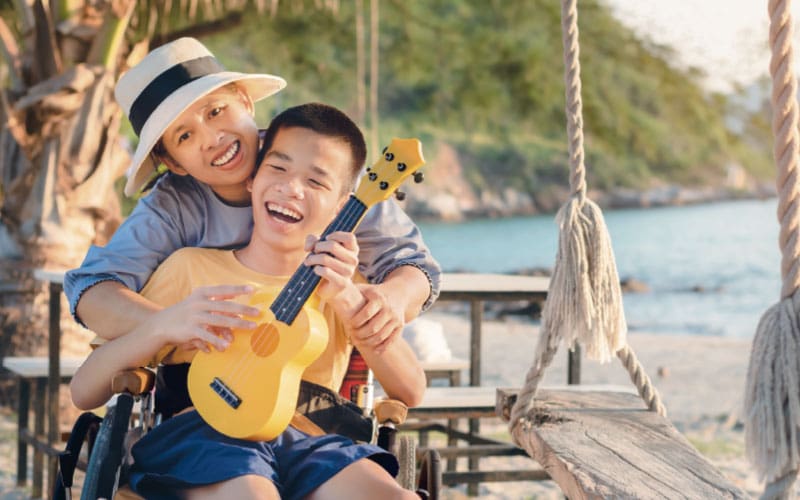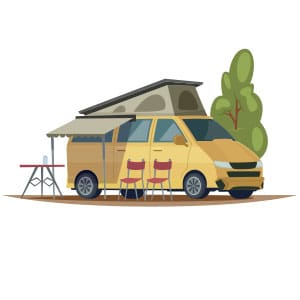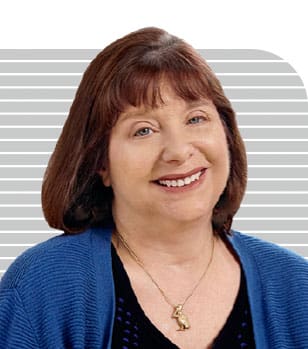Special Section // SUMMER RECREATION

The right planning will make travel enjoyable for all family members.
© GAYSORN
Fun for all
Vacationing with an anxious, inflexible or neurodiverse child
by DAWN M. BARCLAY
Summer is when most families take their vacations, but for the majority of families whose children have “invisible needs” such as autism spectrum disorder (ASD), attention-deficit/hyperactivity disorder (ADHD) and bipolar disorder, travel dangles like a dream just beyond their grasp. However, thanks to a recent focus on travel inclusion, travel doesn’t need to remain a dream.
A 2018 survey of families with children on the spectrum showed that while 87% of families with invisible needs don’t travel, 93% said they would if they knew the right travel strategies, such as how to limit or avoid sensory meltdowns (caused by an overwhelming barrage of unfamiliar sounds, smells and other stimuli) and how to make travel part of the predictable routine their children need. Their other requirement: locating destinations that cater to their unique needs, such as providing ways to avoid long lines and posting signage that identifies where children can go in a theme park or museum to decompress.
And such strategies aren’t just for kids with special needs. Once they are removed from their comfort zone, all children have the potential to become anxious and inflexible.
Strategies to enhance every vacation
Successful family travel starts with introducing the concept of travel far in advance of the vacation. Find picture books with your children’s favourite characters in travel situations, watch videos that preview every aspect of the upcoming trip and incorporate role play of appropriate behaviour.
Start small with mini experiences, such as the Premium Kids event that has been held for several years at Montréal-Trudeau International Airport, usually in April, and provides participants with a dress rehearsal of the airport experience from arrival up until boarding.
You can also stay at a friend’s house or local hotel before a long hotel stay to discover where any sensory triggers may lie, set up a tent in the backyard before a camping trip or take a commuter train ride before a longer journey. Label trips to museums or garage sales as “tours,” because a successful local experience can create a positive frame of reference for actual tours taken at vacation sites.
Certification programs
Thanks to a growing number of certifying organizations, travel professionals and suppliers are becoming more knowledgeable and empathetic about the needs of those on the spectrum. Foremost is the International Board of Credentialing and Continuing Education Standards (IBCCES; Ibcces.org), which trains travel professionals as Certified Autism Travel Professionals.
Venues
In the case of indoor attractions, accommodations can include making photos and schedules available to visitors in advance to provide predictability, and posting maps, arrows and signs throughout the facility.
Certified parks and other outdoor attractions may provide sensory guides that list what sensory materials, such as sand and rubber, might be encountered; whether family restrooms and ramps are offered; where quiet and shady places are available; and the existence of potentially risky features such as ponds that pose a danger for individuals who may be drawn to water or tend to wander.
At theme parks, along with providing quiet areas to decompress, and sensory guides and signage alerting visitors to potentially unpleasant lights and unusual smells, accommodations can mean creating procedures so those on the spectrum can avoid long waiting lines, and use of a stroller as wheelchair to accommodate children who can’t stand for prolonged periods of time.
With these destinations and strategies in place, take the advice of Michelle Zeihr of Barrie, Ontario, the mother of two girls, one of whom is on the spectrum with ASD and ADHD: “Don’t be afraid to go. The more you travel with [your children with invisible needs], the easier it gets. Remember, where there’s a will, there’s a way.”

ONYXPRJ / STOCK.ADOBE.COM
For the family
Along with autism-friendly resorts with kids’ clubs, theme parks and cruises, camping and sports vacations can be great choices for families with both neurotypical (nonautistic) and neurodiverse children. Camping offers several options (tent, cabin, RV) and the freedom to determine your destination and daily activities. Meanwhile, individual sports, such as adaptive skiing, horseback riding, golf, scuba diving and even surfing, are more conducive for children on the spectrum because they can participate without stress-filled social interaction. Neurotypical children can use the vacation to learn new skills or improve old ones. Everyone returns home with a new skill and happy memories.—DMB
Avoiding meltdown
Creating a child-centric vacation can prevent meltdowns before they start:
- Vet two or three destination options and then let the child decide.
- Avoid overstimulation by pacing the trip to the child’s abilities.
- Carry a go-to bag with snacks, noise-cancelling headphones, etc.
- Include activities focused on a child’s special interest or passion.
- Arrange the vacation with a Certified Autism Travel Professional (autismtravel.com/travel-agents).—DMB

Costco Connection: Costco warehouses and Costco.ca carry noise-cancelling headphones, snacks, luggage and more.

